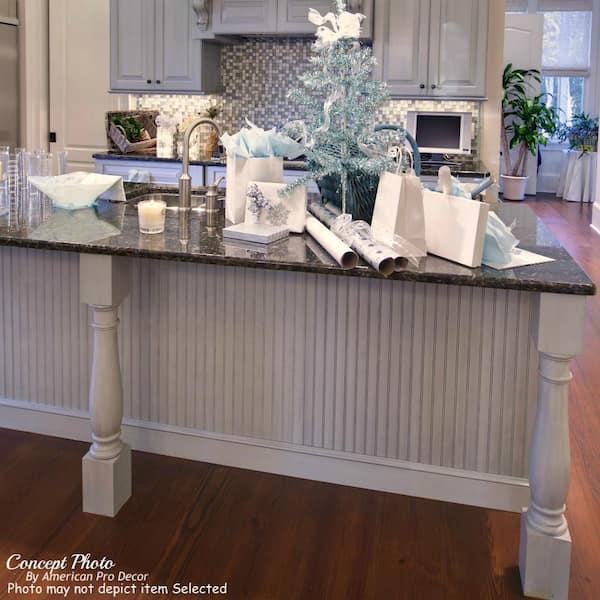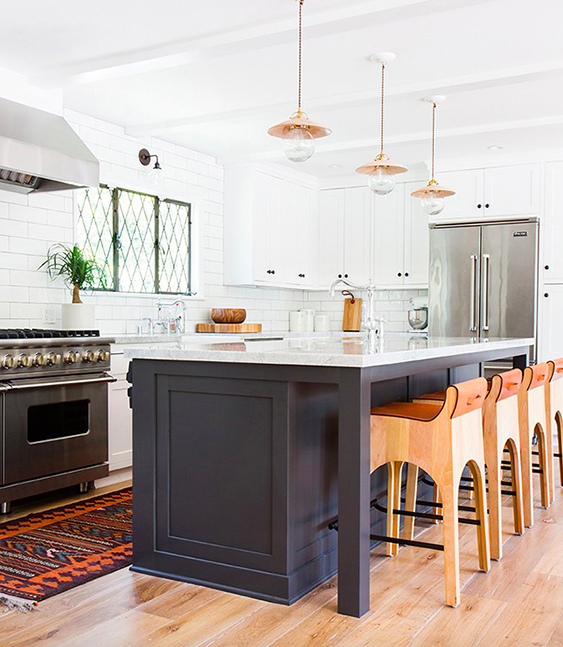Change Your Kitchen with Beautiful Kitchen Island Legs
Change Your Kitchen with Beautiful Kitchen Island Legs
Blog Article
Vital Tips for Choosing the Perfect Table for Your Kitchen Area
Choosing the ideal table for your kitchen area is greater than just an issue of preference; it demands a detailed understanding of your space and demands. Begin by determining your readily available room to make certain sufficient clearance for movement. The form of the table plays a critical role; while rectangle-shaped tables match bigger locations, round ones foster affection, and extendable alternatives supply versatility. Product selection is just as critical, with hardwoods offering longevity and glass lending a modern touch. Finally, the table should integrate with your kitchen area's visual appeals and suit your family members easily. What other aspects might affect this vital decision?
Measure Your Space
Picking the optimal table begins with a thorough analysis of your readily available area. This foundational action guarantees that the table not only fits comfortably within the space but also complements the general design and capability of your eating area. Begin by measuring the dimensions of the area, thinking about entrances, windows, and any type of existing furniture. This will aid you determine the maximum permitted size for your table.
It is necessary to leave appropriate area for chairs to be drawn out and for people to relocate around the table without obstruction. A basic rule of thumb is to permit at the very least 36 inches of clearance from the edge of the table to the nearby wall or item of furniture.
Furthermore, think of the variety of people you commonly amuse and whether you require added area for guests. Going with an extendable table can provide adaptability, enabling you to fit differing varieties of restaurants. By properly gauging your area, you prepared for picking an eating table that enhances both the appearances and capability of your eating area.
Pick the Right Forming

On the various other hand, round tables are excellent for smaller kitchens or intimate events, as they advertise discussion by permitting every person to face each other. They also provide a sense of coziness and can fit well in tighter areas as a result of their absence of sharp edges. Oblong tables offer the very best of both worlds, integrating the length of rectangle-shaped tables with the affection of rounded ones, making them functional for numerous setups.
Square tables are an additional choice, particularly suited for square-shaped rooms. They produce a modern and balanced look, cultivating an equivalent eating experience for all seated. They may be much less sensible for larger gatherings unless they come with expansions. Inevitably, the form you select ought to align with your room measurements and way of living to make certain both kind and feature.
Material Considerations
When picking an eating table, material factors to consider are paramount in determining the basics table's sturdiness, upkeep requirements, and overall visual. Wood is a classic selection, using classic charm and toughness. Hardwoods like oak, walnut, and mahogany are specifically sturdy, though they can be expensive. kitchen island legs. Softwoods, such as want, are more affordable yet may be vulnerable to dents and scratches.
Glass-topped tables provide a modern, sleek appearance and can make a room show up bigger as a result of their transparency. Nevertheless, they need regular cleaning to avoid spots and fingerprints. Furthermore, solidified glass is suggested for its additional stamina and click for more security.

Finally, composite materials like MDF (Medium-Density Fiberboard) or plywood are budget-friendly alternatives. These products can resemble the look of strong wood but might not use the exact same longevity. They are generally easier to tidy yet can be prone to water damage if not effectively secured.
Ultimately, the choice of product must line up with your kitchen area's style, your way of life needs, and your budget restraints. (kitchen island legs)
Seating Capacity and Convenience
Exactly how do you establish the best seats ability and comfort for your dining table? For a family members of four, a rectangular table of 48 inches long or a round table with a 48-inch size is generally sufficient.
Comfort is just as important. The height of the table need to preferably be around 30 inches, providing a balanced ergonomic stance for seated restaurants. Chairs need click here to read to have a seat height of 18 to 20 inches to guarantee a comfy eating stance. Additionally, think about the chair layout; upholstered seats and helpful backrests can boost eating convenience significantly, especially during extended meals.
Style and Aesthetic Appeal
Choosing a table that fits your style and aesthetic appeal includes balancing personal taste with the existing design of your dining space. The table is typically the centerpiece of the kitchen, and its design ought to match the total style of the space. Whether your kitchen flaunts a modern-day, minimal look or a rustic, farmhouse beauty, the table you pick need to balance with these elements to create a natural and inviting atmosphere.
Take into consideration products very carefully; wood supplies an ageless appeal and can vary from abundant mahogany for a conventional look to lighter oak for a contemporary feeling. Metal and glass tables, on the other hand, can present a sleek, commercial edge to your kitchen. Do not forget the table's form-- rectangular tables are timeless and flexible, while round and oval choices can cultivate a much more intimate eating experience.
Furthermore, pay very close attention to details and finishes. A troubled finish may include character and heat, whereas a glossy surface can add to a clean, contemporary visual. Eventually, your eating table should not just healthy effortlessly into your kitchen area's layout but likewise mirror your personal style, raising the room both functionally and visually.
Final Thought
In verdict, picking the excellent eating table for a cooking area demands mindful examination of area, shape, material, seating capacity, and aesthetic consistency. Inevitably, an appropriate eating table promotes a welcoming environment and fits the home conveniently, therefore improving the dining experience.

When selecting a dining table, product factors to consider are vital in identifying the table's sturdiness, maintenance requirements, and overall visual. For a household of four, a rectangle-shaped table of 48 inches long or a round table with a 48-inch diameter is generally adequate.
Do not ignore the table's shape-- rectangle-shaped tables are functional and traditional, while round and oblong choices can cultivate a much more intimate eating experience. kitchen island legs.
Report this page